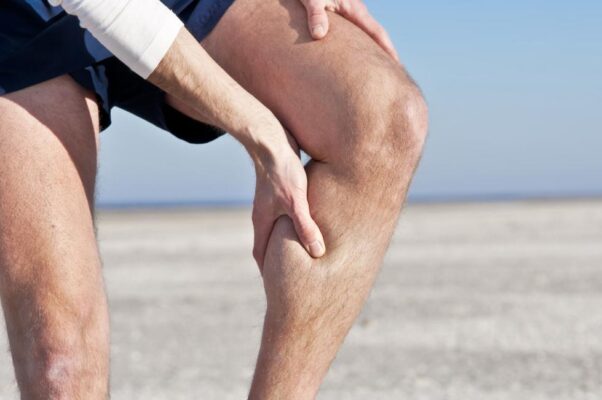Calf tears
A calf muscle tear usually causes sudden, intense calf pain and may prevent you from walking or bearing weight on your leg. Calf muscle tears usually heal with conservative treatments, but sometimes require surgery.
Anyone can get a pulled calf muscle. But these strains are more common in athletes who perform lots of stop-start movements with quick bursts of speed. Sprinters, football players, soccer players and tennis players are prone to pulled calf muscles. Sometimes the injury is called “tennis leg.”
Gastrocnemius strains (near the middle of the calf) are more common than soleus strains (the lower calf, closer to the heel).
Other risk factors for pulled calf muscles include:
- Age: People over 40 may be more likely to get strains during physical activity.
- Sex: Some studies suggest that men are more likely to get calf muscle injuries.
- Lack of conditioning: It’s important to warm up and stretch before physical activity and condition your muscles before the start of a sports season.
- Muscle quality: People with tight or short calf muscles have a higher risk of calf strains.
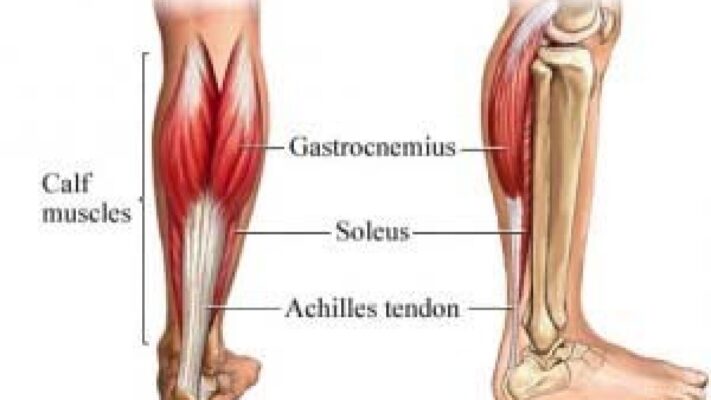
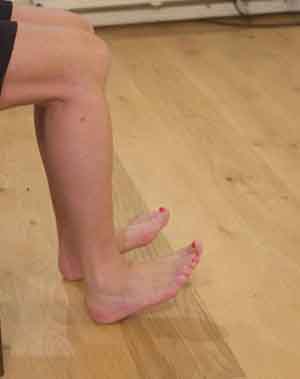
Symptoms are:
- Difficulty tensing your calf muscles or standing on toes.
- Muscle pain when flexing your ankle or pointing your toes.
- Problems bending your knee.
- Snapping or popping sensation in your calf.
- Sudden pain in the back of your lower leg.
- Swelling in your calf muscle.
- Bruising on your calf muscle.
Most people with a pulled calf muscle report not being able to continue with their activity immediately following the injury.
Outlook
Most people recover fully from pulled calf muscles without any permanent damage. Ask your healthcare provider when you can gradually start to do light activities again. Depending on the severity of your injury, it may be several weeks before you can return to full activities.
Once you’ve had a pulled calf muscle, you have a higher risk for future strains in that area. Reduce your risk of reinjury by allowing your injury to fully heal before getting back to normal activities.
Treatment
Immediate treatment for pulled calf muscles usually includes RICE, which stands for:
- Rest: Stop running or physical activity to avoid further damaging the calf.
- Ice: Apply an ice pack or cold compress for 20 minutes every two hours. Don’t apply ice directly to your skin.
- Compression: Reduce swelling and fluid build up by applying a compression bandage or wrap to the injured area.
- Elevation: Lift your leg into an elevated position, preferably above the level of your heart. Support the entire length of your leg with pillows, blankets or cushions.
- Painkillers: such as Paracetamol
For the 1st 24 hours avoid
- Applying heat to the injured area or having a long hot bath
- Drinking alcohol.
- Massaging the calf.
- Walking or performing physical activity.
Reusable ice pack-
which is very useful in the treatment of any muscle tear
Heel Raisers-
to help take the strain of the muscle for the first few days/weeks
Physiotherapy – Guidelines for the Rehabilitation Program
Healing of a calf muscle usually takes about 6-8 weeks however everyone recovers from injury at different rates. The rate of healing of your muscle will depend on how severe your injury is as well as any other medical problems you may already have.
However a totally ruptured calf muscle or Achilles tendon (Grade 3 rupture) can take a lot longer (between 3 and 6 months) depending on the severity of the injury. It will also depend on the potential Orthopaedic management.
As healing gets underway, it is important to begin a series of exercises to gently stretch the calf muscle so that it heals back to its full length.
These exercises will help restore normal function and movement in your lower limb and reduce the risk of further injury.
Recovery exercises- Day 4-9
Try and walk as normally as possible- if this is not possible use crutches
A heel raise wedge will also help ease the pain and make it easier to walk if walking is difficult.
Carry on using ice after exercise
Exercises- Phase 1
1.Calf stretch- Sit on the floor with your legs outstretched and feet against the wall. Then try and pull the toes up towards you keeping the heels on the wall.
Then push your toes against the wall and feel the calf muscle working
2.Active ankle movements up and down in lying
3.Active ankle movements up and down in sitting- Treddle motion
Exercises -Phase 2 Day 9-21
By this stage you should not have pain or swelling at rest and you are able to walk pain free without crutches.
The aim now is to have a full pain free range of motion of the muscle, a normal walking pattern on a variety of surfaces and commence pain free strengthening exercises
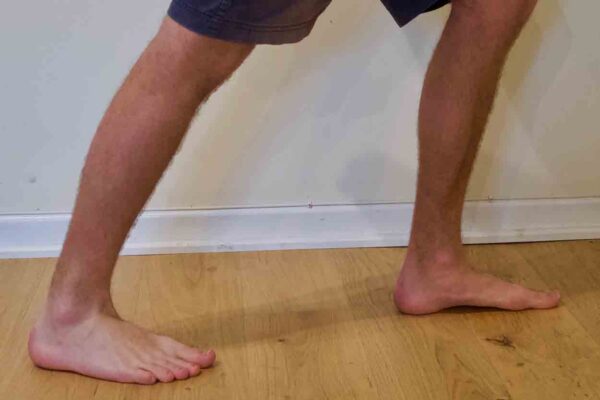
1.Standing calf stretch
Stand in a walking position with the leg to be stretched straight behind you and the other leg bent in front of you. Take support from a wall or chair.
Lean your body forwards and down until you feel the stretching in the calf of the straight leg.
2. Standing Soleus Stretch
Stand in a walking position with the leg to be stretched behind you. Hold on to a support.
Bend the leg to be stretched and let the weight of your body stretch your calf without lifting the heel off the floor.
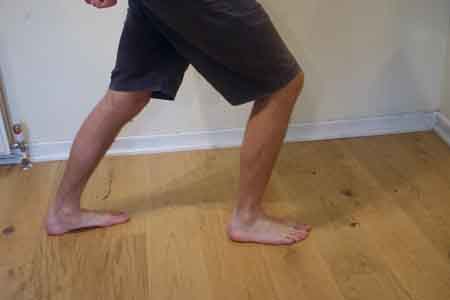
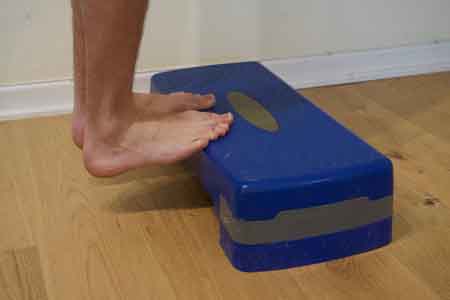
3. Stand on the edge of a step with your feet together. Raise and lower
Strengthening exercises-
4.Theraband exercise- Sit on the floor or on a chair. Put a rubber exercise band around your foot.
Pull your foot up towards your body, and then gently return to starting position x 20
5. Theraband exercise pushing toes down-
Sit on the floor or on a chair. Put a rubber exercise band around your foot.
Point your toes towards the floor. Slowly return to starting position x 20
6. Double Heel raise- Stand.
Push up on your tiptoes.
Once you can do this pain free you can remove your heel raise/wedge if you were using one
Repeat x 50
7. Run on the spot when able
8. Then do jumping on the spot
9. Hopping on one leg
10. Practice balancing on the bad leg
Continue all the stretching exercises regularly

